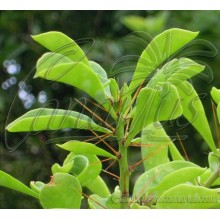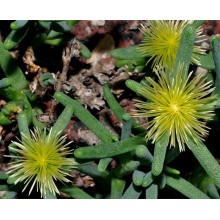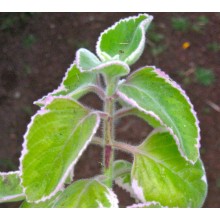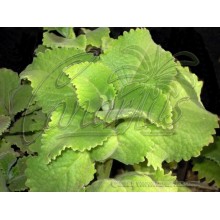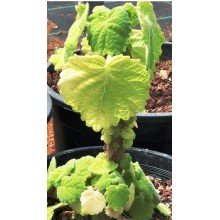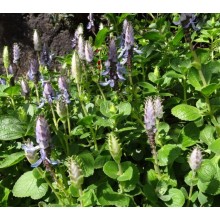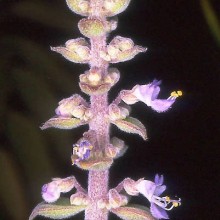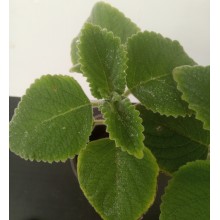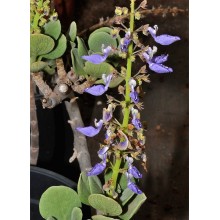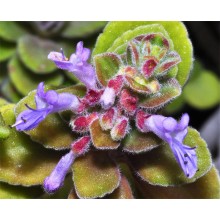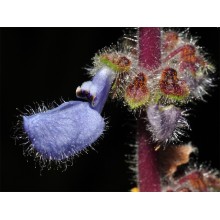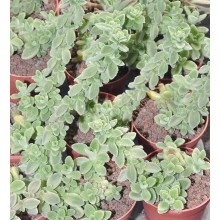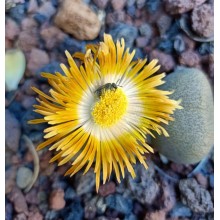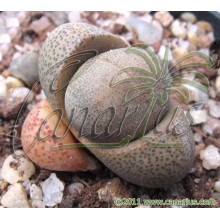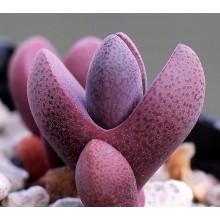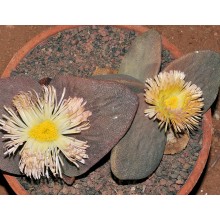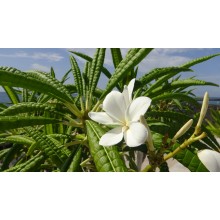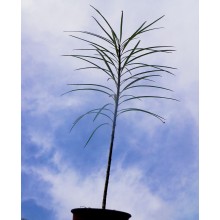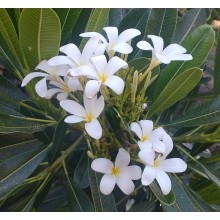Succulente Ci sono 628 prodotti.

I deserti del mondo e le zone secche ospitano le piante più interessanti. Canarius offre una selezione crescente di piante succulente di massima qualità, perché sono coltivate all'aperto, in pieno sole delle Isole Canarie.
I succulente o "piante grasse" sono specie di ritenzione di acqua, adattate alle condizioni di asciutto. Loro accumulano succum (succo, acqua) nelle loro foglie, steli o radici, e spesso mostrano un aspetto robusto e carnoso.
Sotto-categorie
-
Agave
Agave è un genere di piante grasse provenienti dall'America. Alcune specie crescono in zone fredde e possono sopportare un forte gelo, mentre altri vivono in climi tropicali. Alcuni sono piccoli nani e alcuni sono giganti, fino a 2 o 3 m di larghezza.
Le agavi resistenti al freddo possono creare un effetto esotico nel vostro giardino. Le specie agave fanno bella compagna di palme o cactus. Le agavi variegate sono incredibilmente ricercati dai collezionisti. Il nostro negozio web offre una selezione in continua evoluzione delle specie. Spediamo piante a radice nuda, se non diversamente specificato.
-
Aloe, Gasteria & Haworthia
Aloe, Gasteria e Haworthia sono tre generi correlate, comprese centinaia di piante succulente. Sono tutti facilmente coltivate in vaso. Alcuni si adattano a bassi livelli di luce di condizioni interne e possono essere coltivate come piante da appartamento.
- Aloe è un genere di circa 400 specie, originarie di Africa, Arabia e Madagascar. I aloe piccoli o nani stanno diventando particolarmente popolare in climi più freddi in quanto possono essere presi in casa durante i mesi più duri.
- Gasteria comprende circa 80 specie endemiche in Sud Africa, conosciuti per le loro foglie spettacolari che sono lucide, screziati e ruvidi. Fioriscono in primavera-estate con lunghe punte di piccoli fiori arancioni. Alcune specie sono talmente variabile che offriamo cloni particolari di località specifiche.
- Haworthia è un genere endemico in Sud Africa con circa 70 specie e un certo numero di sottospecie locali, varietà e forme. Le foglie sono spesso banded, punteggiati, punteggiato, o semi-trasparente e mostrano ampie variazioni.
-
Crassule
Questa è una nuova e crescente sezione di specie della famiglia Crassulaceae. Ci sono circa 1.400 specie in 33 generi et la loro distribuzione è in tutto il mondo, ma si presentano più nell'emisfero Nord e Sud Africa, in particolare in ambienti asciutti. Qui si possono acquistare piante sani, indurito dal sole, coltivati nelle isole Canarie e spediti a casa tua.
-
Mesembriantemi
Questo gruppo di piante del deserto è chiamato Mesembriantemi perché appartengono a una famiglia botanica precedentemente denominata Mesembryanthemaceae. Ci sono quasi 2.000 specie, che si trovano principalmente in Africa del sud, con adattamenti estremi agli habitat secco. Alcuni sono chiamati "pietre vive", perché sembrano come ciottoli. Molti sono facili da coltivare e il loro bisogno principale è pieno sole. Alcuni sono difficili perché crescono nelle aree veramente estreme.
Il nostro Web Shop offriamo piante sane coltivate al sole, con foglie compatte e colorate. Alcune piante sono venduti come talee, e altri come piante radicate, di almeno due anni. -
Sansevieria
Recentemente assegnato alla famiglia Asparagaceae, il genere Sansevieria conta circa 70 specie, quasi tutti nativi in Africa, Arabia e Madagascar. Erbe perenni adatti per gli habitat secchi con foglie rigide, succulente, la loro lunghezza varia da pochi centimetri a 2 metri. Sansevieria trifasciata e le sue numerose cultivar sono tra le piante d'appartamento più apprezzati, popolarmente chiamata la lingua di suocera. Una pianta ben coltivata di solito produce un picco di molti fiori bianchi, riccamente profumati e poi bacche arancioni. Anche le specie più rare sono resistenti ad abbandono, a condizione di tenerli dal gelo in inverno e sole cocente in estate.
-
Hoya
Le Hoyas sono rampicanti, dai fiori esotici e spesso vistosi. Provengono dalle foreste pluviali in Asia e Oceania. La maggior parte delle specie vive bene a mezz' ombra e si adatanno a vivere in casa come piante da appartamento. Sono ideali per cesti e tralicci. Tollerano un paio di settimane di siccità, ma sono sensibili al gelo e freddo. Molte hoya i sono facili da far crescere e fiorire, mentre alcune sono difficili e rare.
-
Asclepiadaceae
Le Asclepiade, o Asclepiadoideae, sono una sottofamiglia delle Apocynaceae, che annoverano circa 2900 specie diverse. Tra queste si trovano molti fusti privi di foglie ma anche erbe perenni, arbsuti, liane e, raramente, alberi. Producono fiori molto belli, dato il complesso sistema di impollinazione. Molte specie producono un odore insolito, spesso associato a quello di una carogna, la cui funzione è quella di attrarre le mosche che poi andranno a impollinare i fiori. -
Caudiciformi
Queste piante, dette anche pachicauli, sono tipiche delle zone aride. Producono un tronco insolitamente grosso e sproporzionato, detto caudice (a volte anche tubero), spesso con ramificazioni. Il caudice può essere anche nascosto sottoterra, ma nella maggior parte dei casi ha sviluppo verso l'alto, dando luogo ad alberi dalla forma spettacolare. I caudiciformi più grandi sono i baobab. -
Altre succulente
Qui troverete tutte quelle specie di piante del deserto che non sono inclusi nella propria categoria. Metteremo qui tutte le piante provenienti da famiglie inusuali, diversi da Agavi, Aloe, Crassulaceae, Sansevieria, Mesembriantemi, Epiphytic cacti, etc.
-
Pereskia zinniiflora
Pereskia zinniiflora
NEW ! - Pereskias are leafy and spiny trees in the Cactus family. This species has small leaves and nice pink rose-like flowers. This is the Cuban form. It grows a thick root and it can be easily grown in pots and kept as a shrub or even bonsai.
32,00 € -
Phyllobolus prasinus
Phyllobolus prasinus
Small shrubby mesemb, with "bonsai habit" and showy yellow-green flowers. It grows a perennial short branched stem and each year it will build the new shoots with leaves and flowers, which are weakly lignified and will last only one season.
22,00 € -
Phyllobolus tenuiflorus
Phyllobolus tenuiflorus
This winter growing mesemb from South Africa builds a short and wide caudex year by year. From this perennial trunk, each year it will grow the new shoots with leaves and showy flowers, which are weakly lignified and will last only one season. It also has a showy epidermis, with showy bladder cells full of water.
32,00 € -
Plectranthus amboinicus 'variegatus'
Plectranthus amboinicus 'variegatus'
This is a beautiful variegated selection of a popular aromatic plant, used much like oreganon. It grows as a creeping shrublet, up to 30-50 cm tall. The blue flowers are also a nice addition to a beautiful species.
10,50 € -
Plectranthus amboinicus - Tropical Oreganon
Plectranthus amboinicus - Tropical Oreganon
This edible plant is grown and used much like oreganon. Beautiful thick, hairy leaves and flowers. It is easy to grow in pots and very ornamental. It is a perennial, semi-succulent herb.
16,80 € -
Plectranthus caninus
Plectranthus caninus
Shrubby succulent with ornamental foliage and elegant spikes of showy blue/purple flowers. All leaves and stems are velvety very aromatic, rich in volatile oils. It is native to dry-deciduous forests in E Africa to India. Grows perfectly in pots or garden rockeries. Better protected from frost.
10,50 € -
Plectranthus cylindraceus Jabal Hadaba
Plectranthus cylindraceus Jabal Hadaba
8-12 cm rooted, branched cutting. This pant was collected in the Al Marha province of Yemen. It was originally identified as P.cyindraceus but it is different from the forms found elsewhere.
16,40 € -
Plectranthus foetidus 'Mt. Carbine'
Plectranthus foetidus 'Mt. Carbine'
This edible plant is grown and used much like oreganon. Beautiful thick, hairy leaves and flowers. It is easy to grow in pots and very ornamental. It is a perennial, semi-succulent herb.
14,80 € -
Plectranthus hyemalis
Plectranthus hyemalis
Mildly scented shrub to about 1 m tall, with attractive, rounded leaves, and beautiful blue-violet flowers. Plectranthus hyemalis was described in 1984, and it is native to rocky slopes in Southern Yemen, at about 1000 m asl.
26,80 € -
Plectranthus socotranus
Plectranthus socotranus
8-12 cm rooted cutting. All plants from the island of Socotra are somehow special and attractive. This Plectranthus is very small and compact. It bears fleshy leaves, just 1-2 cm long, green with a silvery bloom on the upper surface, sculptured with raised veins on the convex lower surface. It bears beautiful purple-blue spikes of flowers.
22,50 € -
Plectranthus sp. Galgallo
Plectranthus sp. Galgallo
8-12 cm rooted cutting, This is the "Mystery Plectranthus" collected in Galgallo, Somalia. It is very attrative because of its compact and symmetrical growth and flowers are simply spectacular, with abundant "hairs".
15,30 € -
Plectranthus sp. Ngorongoro Crater
Plectranthus sp. Ngorongoro Crater
Rooted cutting, with one ore more new growths.
14,00 € 16,00 € -
Pleiospilos bolusii
Pleiospilos bolusii
NEW! - Cont.= 8,5 cm - Popular species of living-stone from South Africa, with thick succulent leaves imitating rocks. It takes light frosts.
10,70 € -
Pleiospilos nelii
Pleiospilos nelii
Cont.= 8 cm. Nearly spherical living-stone succulent plant, with pale mottled green leaves. It is hardy to frosts of about -3 C if kept dry.
10,90 € -
Pleiospilos nelii 'Royal Flush'
Pleiospilos nelii 'Royal Flush'
Japanese red mutant with pink flowers
18,70 € -
Pleiospilos simulans
Pleiospilos simulans
This living-stone plant is a living myth, as it was considered extinct until about 2014, when it was rediscovered in the wild in S of Klipplaat, Eastern Cape, South Africa.
21,80 € -
Plumeria filifolia
Plumeria filifolia
Beautiful non-hybrid plumeria with thin, glossy thread-like leaves, dark green above and yellowish below. It blooms abundantly in during the growing season.
142,00 € -
Plumeria obtusa 'Cuban Dwarf'
Plumeria obtusa 'Cuban Dwarf'
Dwarf, shrubby plumeria, probably selected from the wild forms of Plumeria obtusa that grow on the hills in Northern Cuba.
34,20 €
Al momento ci sono pochi prodotti in questa categoria Succulente

























